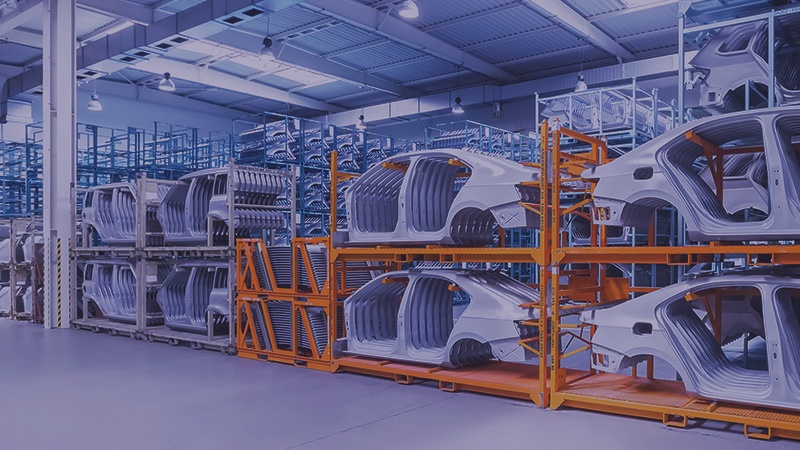How to Justify the Cost of On-Demand Manufacturing
Robust additive manufacturing (AM) business use cases empower companies to rethink the conventional manufacturing paradigm. But understanding when and where to justify the cost of AM opportunities is paramount.
In 2020, the AM industry generated $12.8 billion in revenue. According to Wohlers Report, that figure is forecasted to reach $115 billion by 2030, signifying increased confidence in the benefits of additive technology.
However, AM start-up costs still require significant investment; AM machine costs remain high to recover development costs relative to the number of units sold. However, as new competitors enter the market and adoption rates increase, entrance barriers to AM will eventually become more accessible.
In the meantime, companies need to have an honest discussion about whether technology initiatives are mature enough for AM. In addition, justifying AM costs relative to ROI is crucial to enabling on-demand manufacturing.
To help determine whether your organization is suitable for manufacturing on-demand, ask yourself the following questions:
Does my organization have a large inventory of suitable AM parts?
3D printing is particularly beneficial for manufacturing spare parts on-demand. However, to justify the cost of an AM venture, it’s necessary to analyze your spare parts inventory to identify business use cases.
Manually vetting thousands of parts is time-intensive, even with well-managed inventory records. Today, most spare parts will require conventional manufacturing methods only because the data is unfinished and building the digital library takes time.
3YOURMIND’s AM Part Identifier solution thoroughly examines and helps identify suitable AM spare parts by analyzing economic and technical data. If your organization has an inventory of validated designs that meet technical and economic specifications, your company may be mature for on-demand manufacturing.
3YOURMIND’s customers with well-positioned additive manufacturing strategies experience average cost savings between $4.5 and $9M using Agile PLM for production, operation of warehouses, and production downtime through qualified AM parts.
Discover How to Identify the Right AM Parts With Digital Qualified Inventory
Do short-term supply chain disruptions have devastating effects on my business operations?
Supply chain disruptions are inconvenient, but for some industries, they’re devastating. According to a Fortune report, 94% of Fortune 1000 companies have experienced supply chain disruptions from COVID-19.
For sectors that utilize low-volume production, disruptions like remanufacturing casting tools can impact production lead times by nearly two years.
In industries like aviation, long lead times for spare parts can reduce operational capabilities and considerably depreciation core business equipment, like airplanes. In examples like this, a fully realized AM on-demand manufacturing initiative can enable supply chain flexibility, drastically reduce production lead times, and minimize revenue loss.
Watch 3D Friday Talk Show: Oil & Gas Industry: From Physical Parts to Digital Warehouse
Is my warehouse easily accessible? Do I need to access warehoused parts often?
Warehousing costs can eat into budgets, especially for organizations that do not regularly need spare parts. According to an article published by the Journal of Operation Management, up to 8% of stock-keeping units (SKUs) and 2% of total units supplied will be able to transition from conventional sourcing to on-demand additive manufacturing.
This transition is due in part to lengthy procurement timelines experienced by industries like oil and gas required to maintain high inventories of spare parts, resulting in significant warehousing costs.
In addition, building a digital warehouse inventory is a relevant use case to enable on-demand manufacturing for enterprises that operate in remote locations from their parts warehouses, such as aerospace, naval, and transportation.

Does my company operate equipment that utilizes legacy parts?
With additive manufacturing, prototyping, and testing parts are accelerated and promote flexible design changes. With conventional manufacturing, casting molds for new parts can incur substantial costs over the total product lifecycle. According to the 2021 Wohlers Report, replacing legacy parts, which is critical to enable full-operational capacity for industries like transportation, defense, and oil and gas, can rapidly sustain millions in lost revenue.
Use cases for on-demand additive manufacturing can drastically shorten production lead time to enable companies to access vital parts when and where they need them.
Next Steps
Justifying the cost of additive manufacturing is the first of many steps to enable on-demand manufacturing. Next, learn how to increase additive manufacturing production rates to optimize on-demand processes.
Want to learn more ways to justify the costs of on-demand manufacturing? Talk to one of our experts to learn how on-demand manufacturing can support your business.
